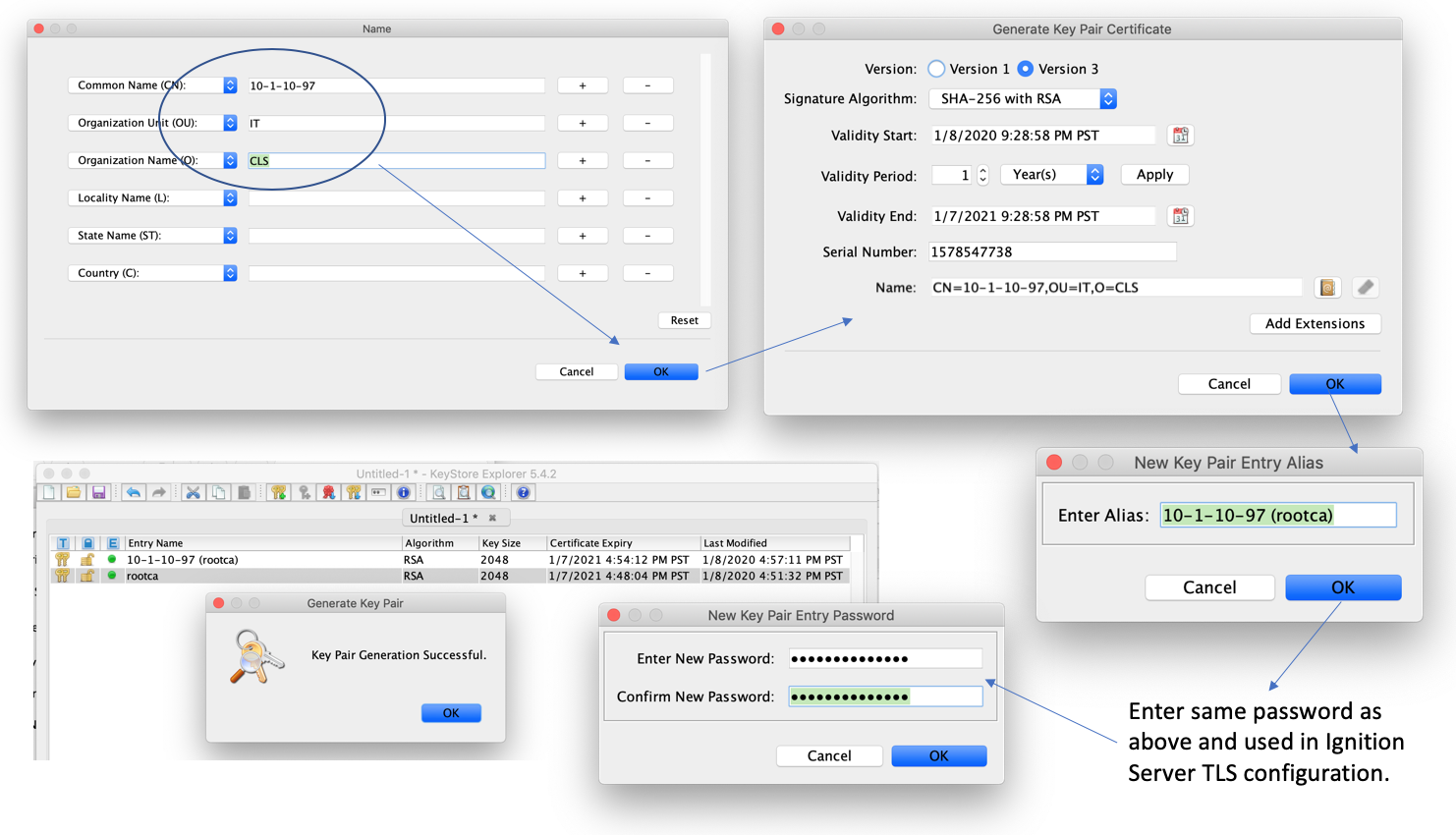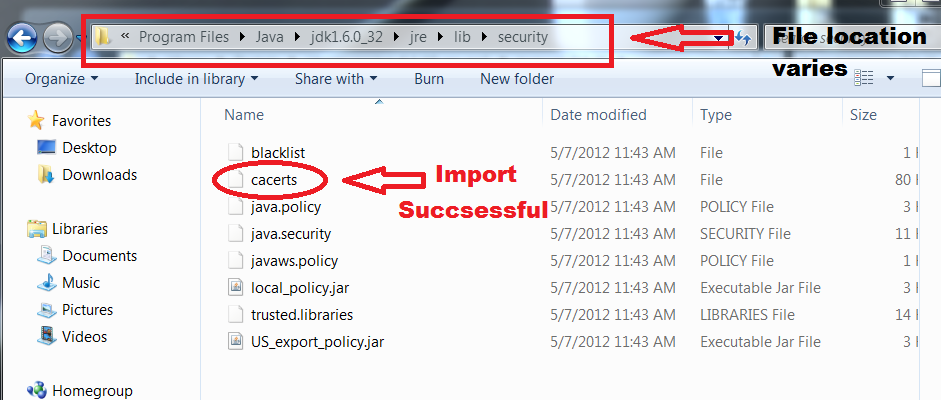

- #Keystore explorer export crt full#
- #Keystore explorer export crt password#
- #Keystore explorer export crt download#
- #Keystore explorer export crt windows#
Open server.xml in a text editor and add the following connector:. Create a copy of the server.xml file located in /conf/. If you would like to use a less secure connector you can use the example shown here:įor a more secure connection using the following steps: The example below uses a hardened and secure connector which supports the following clients: In Tomcat there are many different ways to configure your connector. Save the chained.crt file and proceed to add it to the Java Keystore section. #Keystore explorer export crt full#
You can use the bundle to create the full chain as long as the end result is formatted in the illustration above. Note in some cases your Intermediate and Root Certificates can be downloaded as a bundle.
Repeat the process again for the Root Certificate (PEM). Open the Intermediate Certificate (PEM) and copy the contents. Copy the contents and paste them into the chained.crt file. This is the SSL certificate that your Domain is tied to. Open your Domain Certificate (PEM) in a text editor. Open an empty text file and call it chained.crt. We use Notepad++ for this section as it allows you to open multiple text files and let you flip between them. (Your Primary SSL certificate: your_domain_name.crt) There are many methods of creating a full chained certificate. Right click on tomcat and select Edit Certificate Chain and choose Remove Certificate.Ĭreating an Entire SSL Certificate Trust Chain Note: If you receive an error adding the full certificate chain to the keystore container you may still have your Self-Signed Certificate as part of your keystore. Save the Keystore file and proceed to the Deploy SSL Certificate on Tomcat. You should see a waterfall of certificates with the bottom one being your Domain SSL Certificate.  Once the import is complete right click on tomcat and navigate to View Details and select Certificate Chain Details.
Once the import is complete right click on tomcat and navigate to View Details and select Certificate Chain Details.  From the file explorer, locate and select the SSL Certificate you have downloaded from the Certificate Authority. Right-click on tomcat and select Import CA Reply and use the From File option. Open the Keystore container (companyssl.jks) created when Generating the CSR.
From the file explorer, locate and select the SSL Certificate you have downloaded from the Certificate Authority. Right-click on tomcat and select Import CA Reply and use the From File option. Open the Keystore container (companyssl.jks) created when Generating the CSR. #Keystore explorer export crt download#
Please download the certificate as a full chain with a CRT extension. If you did not get a full chained certificate then create one here. In this step, we will replace the Self-Signed Certificate in your current Keystore ( companyssl.jks) with the one you have purchased from the Certificate Authority. Once you have received your Certificate from your Authority Vendor use these steps to add it to your Keystore.Īlternatively, you can choose to Deploy the Self-Signed Certificate.Īppend Signed SSL Certificate to Keystore
The CSR can be uploaded to your Certificate Authority or Vendor for signing purposes. Self-Signed Certificate (which is in the Keystore container). Private Key (which is in the Keystore container). At this point, you will have a Keystore file that contains:. You will receive a message confirming the CSR Generation Successful. In the new window, you will see a path to where the CSR will be stored edit the path if necessary. To Export the CSR, right-click on the tomcat entry and select Generate CSR. You will be prompted to Set a Keystore Password. We suggest using a folder on the root of C:\ called TomcatSSL. Save the Keystore, for this article we will use companyssl.jks. You should receive a message to confirm Key Pair Generation Successful. #Keystore explorer export crt password#
This password will be required for other steps, keep it handy. We suggest using a complex password with 8 characters. You will be prompted to enter an Alias name.
Once you have completed your entry hit OK. Please note that the CN field should be the Domain you are trying to secure. This information will be needed to Generate the CSR. At the bottom of the window edit the Name section. Use the RSA Algorithm with 2048 key size. Right-click in the white space and select Generate Key Pair (Ctrl+G).  Run the application and select Create A New Keystore and select the JKS radial. Append Signed SSL Certificate to Keystore. Here are quick links to sections within the article: Our document was written and tested with Certificates purchased from Thawte or Digicert. The steps below will help you create a Java Keystore (JKS) which contains a Self-Signed SSL Certificate or one that has been purchased from a Certificate Authority.
Run the application and select Create A New Keystore and select the JKS radial. Append Signed SSL Certificate to Keystore. Here are quick links to sections within the article: Our document was written and tested with Certificates purchased from Thawte or Digicert. The steps below will help you create a Java Keystore (JKS) which contains a Self-Signed SSL Certificate or one that has been purchased from a Certificate Authority. #Keystore explorer export crt windows#
This article will walk you through the different steps in creating and installing an SSL certificate on a Tomcat Webserver in a Windows Environment. Posted by Aly Essa, Last modified by Aly Essa on 27 October 2020 10:15 AM








 0 kommentar(er)
0 kommentar(er)
